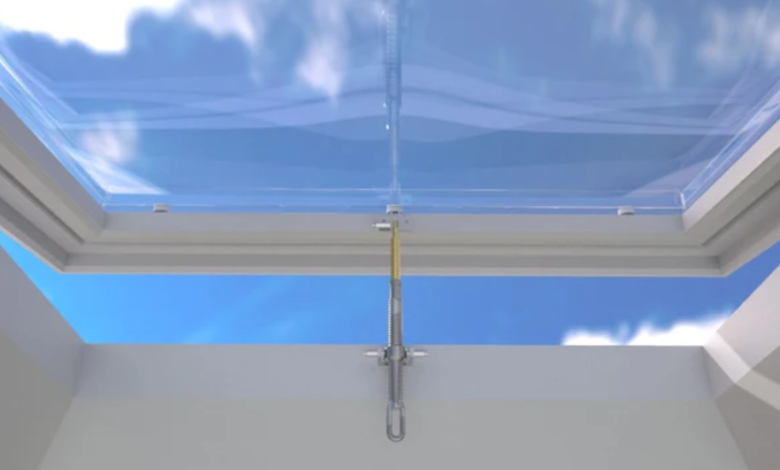Why Choose Polycarbonate Rooflights for Flat Roofs? Benefits and Installation Tips

Flat roofs are a popular architectural choice for modern homes and commercial buildings alike. They offer a sleek, contemporary look and allow for flexible use of space beneath. However, one challenge with flat roofs is bringing natural light into the rooms below. Traditional vertical windows often don’t suffice, leaving interiors feeling dark and confined.
This is where polycarbonate rooflights come into play. Specifically designed to fit flat roofs, polycarbonate rooflights are a practical, attractive solution that floods your space with daylight while providing exceptional durability. In this article, we’ll explore why polycarbonate rooflights are ideal for flat roofs, their many benefits, and essential tips to ensure successful installation.
What Are Polycarbonate Rooflights?
Polycarbonate rooflights are transparent or translucent panels made from polycarbonate—a tough, lightweight plastic known for its high impact resistance and excellent light transmission. These rooflights come in various shapes and sizes, often designed to sit on flat roofs and let natural light into the space below.
Unlike traditional glass, polycarbonate is flexible and far less likely to shatter, making it perfect for flat roofs that may be exposed to harsh weather, falling debris, or foot traffic during maintenance.
Key Benefits of Polycarbonate Rooflights for Flat Roofs
1. Exceptional Durability and Impact Resistance
One of the biggest advantages of polycarbonate rooflights is their durability. Polycarbonate is approximately 200 times stronger than glass, making it highly resistant to impact, hail, and breakage. This strength ensures that your rooflight remains intact and secure even during severe weather conditions.
For flat roofs, which may be more prone to standing water or require occasional maintenance access, this robustness is invaluable. Polycarbonate rooflights withstand foot traffic better than glass alternatives, reducing the risk of cracks or damage over time.
2. Excellent Light Transmission
Polycarbonate rooflights allow up to 90% of natural light to pass through, similar to glass. This high light transmission brightens interior spaces, reduces reliance on artificial lighting, and creates a more inviting atmosphere.
Additionally, polycarbonate can be manufactured with UV protective coatings that filter harmful rays while letting in pleasant daylight. This feature helps protect your furniture and interiors from sun damage while maximizing energy efficiency.
3. Lightweight and Easy to Handle
Compared to glass, polycarbonate panels are significantly lighter. This lightweight quality makes handling, transportation, and installation easier and safer. For flat roofs, where structural load capacity can be a concern, using lightweight polycarbonate rooflights minimizes stress on the building structure.
4. Thermal Insulation and Energy Efficiency
Modern polycarbonate rooflights often feature multi-wall or insulated designs that trap air between layers, providing effective thermal insulation. This construction helps regulate indoor temperatures by keeping heat in during the winter and out during the summer.
As a result, polycarbonate rooflights can contribute to lower heating and cooling costs, making your home or commercial building more energy-efficient.
5. Weather and UV Resistance
Polycarbonate is naturally weather-resistant and can withstand extreme temperatures, heavy rain, and snow without degrading. Additionally, UV-resistant coatings prevent yellowing or brittleness caused by prolonged sun exposure, ensuring your rooflight stays clear and functional for years.
6. Cost-Effective Solution
Polycarbonate rooflights tend to be more affordable than traditional glass alternatives. Their ease of installation and low maintenance requirements further reduce long-term costs. For homeowners or businesses seeking a budget-friendly way to introduce natural light into flat-roofed spaces, polycarbonate rooflights offer excellent value.
Installation Tips for Polycarbonate Rooflights on Flat Roofs
While polycarbonate rooflights are generally straightforward to install, following some key tips will help ensure a secure, watertight, and durable fit.
1. Choose the Right Rooflight Size and Shape
Polycarbonate rooflights come in various sizes and shapes—domes, pyramid lanterns, and flat panels are all common options. Consider the size of the room below and the roof’s dimensions when selecting a rooflight. Larger rooflights allow more light but require a structurally sound roof to support them.
For flat roofs, domed or pyramid-shaped rooflights often perform better in shedding rainwater and preventing water pooling.
2. Ensure Proper Waterproofing
Waterproofing is critical on flat roofs, where drainage can be slower. Use quality flashing kits and sealants recommended by the rooflight manufacturer to prevent leaks. Flashing should be properly integrated with the existing roof membrane to maintain a continuous waterproof barrier.
Consider installing an upstand or curb—a raised frame that elevates the rooflight above the roof surface—to improve drainage and reduce the risk of leaks.
3. Check Building Regulations and Planning Permissions
Before installation, check local building codes and regulations to ensure compliance. Some jurisdictions require specific performance standards for rooflights related to thermal insulation and fire safety. In certain cases, planning permission may be necessary, especially if your property is listed or in a conservation area.
4. Work with Experienced Installers
While polycarbonate rooflights can sometimes be installed by skilled DIYers, it’s generally advisable to hire experienced roofing professionals. Proper installation ensures the rooflight is secure, waterproof, and compliant with regulations, preventing costly repairs or issues down the line.
5. Regular Maintenance and Cleaning
Although polycarbonate rooflights are durable and low-maintenance, regular cleaning helps maintain light transmission and appearance. Use mild soapy water and a soft cloth or sponge—avoid abrasive cleaners or tools that could scratch the surface.
Inspect seals and flashing annually to ensure there are no gaps or damage, especially after storms or heavy weather.
See Also: Digital Marketing Services Explained: A Beginner’s Guide for Business Owners
Where to Buy Polycarbonate Rooflights for Flat Roofs
If you’re shopping for polycarbonate rooflights, consider retailers that specialize in roofing products or offer a wide selection of sizes and styles. Online stores often provide detailed specifications, customer reviews, and delivery options for convenience.
Look for suppliers who provide quality warranties and good after-sales support, so you have peace of mind with your purchase.
Conclusion
Polycarbonate rooflights are an excellent choice for flat roofs thanks to their combination of durability, high light transmission, and ease of installation. They offer a cost-effective, low-maintenance way to transform dark, confined spaces into bright, welcoming environments.
By selecting the right style, ensuring proper installation, and maintaining your rooflights regularly, you can enjoy years of natural daylight, improved ventilation, and energy savings.
Whether you’re renovating a home, adding an extension, or upgrading a commercial property, polycarbonate rooflights provide a practical and stylish solution that enhances the functionality and beauty of any flat-roofed space.





